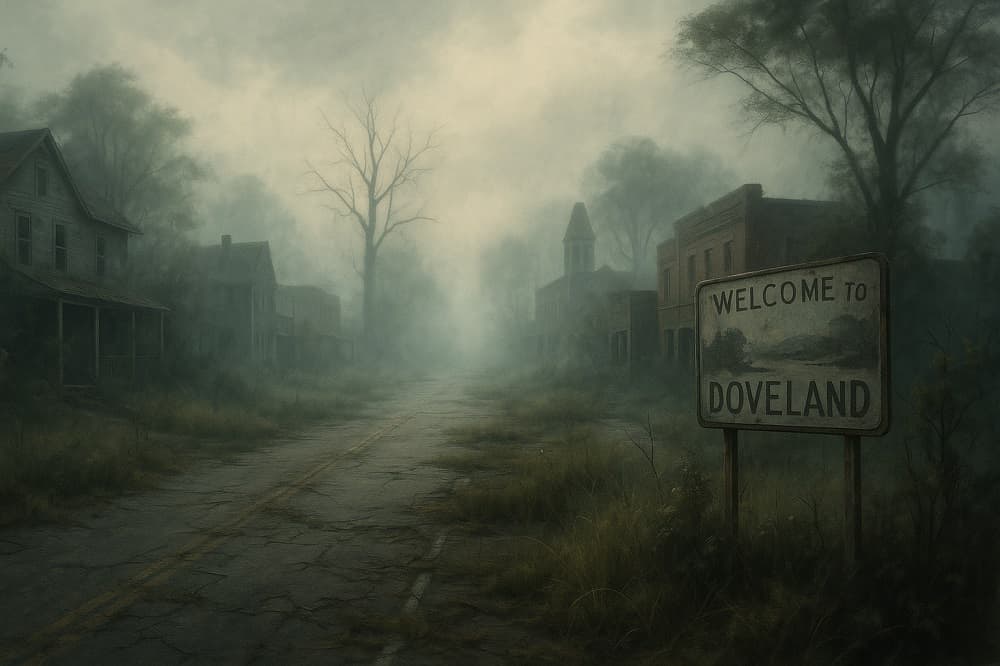What Would Happen If 8 Billion People Clap at Once—All Gathered in One Place?
Imagine a colossal plain stretching endlessly under a vast, cloudless sky—so immense that it defies logic. On this surreal stage stands the entire human population of Earth—8 billion people, shoulder to shoulder, heartbeat to heartbeat. For the first time in recorded history, humanity has come together not to wage war, debate ideologies, or celebrate sport—but to perform a singular, synchronized act: a unified clap.
At the precise moment when 16 billion palms collide, the world holds its breath. Then comes the sound.
The resulting clap would produce a sonic boom unlike anything experienced before—not just in magnitude, but in symbolism. According to basic physics, a human clap averages around 110 decibels at close range. But with 8 billion simultaneous claps, the sound pressure level doesn’t multiply arithmetically—it interacts complexly. In an ideal acoustic alignment, the resulting thunderclap could reach well over 200 decibels—louder than a rocket launch, even nearing the theoretical limits of atmospheric sound transmission. That’s a wall of sound powerful enough to rupture eardrums within kilometers, flatten trees, and send shockwaves reverberating through the air like a miniature, man-made earthquake.
The Sound of 8 Billion Claps
A single human clap produces sound at around 70 to 100 decibels—similar to the noise of a busy street. But decibels don’t stack linearly. Sound is measured logarithmically, so 8 billion claps wouldn’t multiply the volume by 8 billion. Instead, the intensity of the sound would increase marginally, but the shockwave-like effect of billions of air molecules compressed and released in a single moment would be something unique in history.
The wave of sound would radiate across landscapes, bouncing off mountains, skyscrapers, and oceans. Sensitive wildlife might flee in confusion. Birds would lift into the sky in startled swarms. Seismic sensors might even pick up faint tremors, mistaking the sound burst for a minor geological event.
Could It Trigger an Earthquake or Storm?
Unlikely. While the collective energy would be vast, it’s not concentrated enough to displace tectonic plates or disturb atmospheric systems. However, such an event could confuse birds, animals, and marine life, which rely on subtle vibrations and frequencies for navigation and survival. Migratory patterns may be disrupted. Dogs might howl. Elephants could respond from miles away.
Moreover, in urban areas, the sheer force of synchronized clapping could trigger alarms, shatter weak glass, or cause unexpected acoustic resonance in large structures like stadiums or subways. It would be a sonic moment written into architectural memory.
Earth’s Crust Under Pressure
Now consider the ground. 8 billion people, each with an average mass of 62 kilograms, would weigh a combined total of nearly 500 million tons—compressed into one geographical area. The structural stress on Earth's crust beneath such concentrated weight would be enormous. It could cause land subsidence, the formation of pressure faults, and in certain tectonically vulnerable regions, potential localized earthquakes. The vibration from the unified clap, combined with the tremor of billions of feet reacting to the sound, would send low-frequency waves rippling across the planet—potentially measurable on seismographs worldwide.
The Shockwave in the Skies
The air, too, would feel it. The clap would displace enormous volumes of it instantly, creating a shockwave that could break glass in surrounding regions, knock over small structures, and temporarily disrupt local weather systems. Birds would flee. Animals would panic. Satellites might even detect a sudden atmospheric ripple from orbit.
The Human Impact at Ground Zero
Those closest to the epicenter would experience disorientation or temporary deafness. The human heart, sensitive to rhythmic stimulus, might skip a beat—literally—under the physiological stress of such intensity. However, beyond the physical spectacle lies something far deeper and more awe-inspiring.
A Symbolic Resonance Beyond Sound
In a world often divided by borders, beliefs, and battles, 8 billion individuals coming together to perform one unified, resonant gesture would send an emotional shockwave just as potent as the physical one. That clap would be more than a sound—it would be a signal. A symbol of what humanity could achieve when synchronized in purpose. No technological marvel or military feat could compare to the sheer emotional gravity of such an act.
When the Planet Listens
As the final echo of the grand clap fades into silence, the dust settles and the birds return, the Earth exhales. The atmosphere, the soil, and the very soul of humanity would carry the imprint of that moment—etched like an echo in eternity. For one blink in time, Earth didn’t just orbit the sun—it resonated with unity.
And in that breathtaking silence that follows, the message would be clear: When 8 billion voices, hands, and hearts act as one, even the planet listens.
































